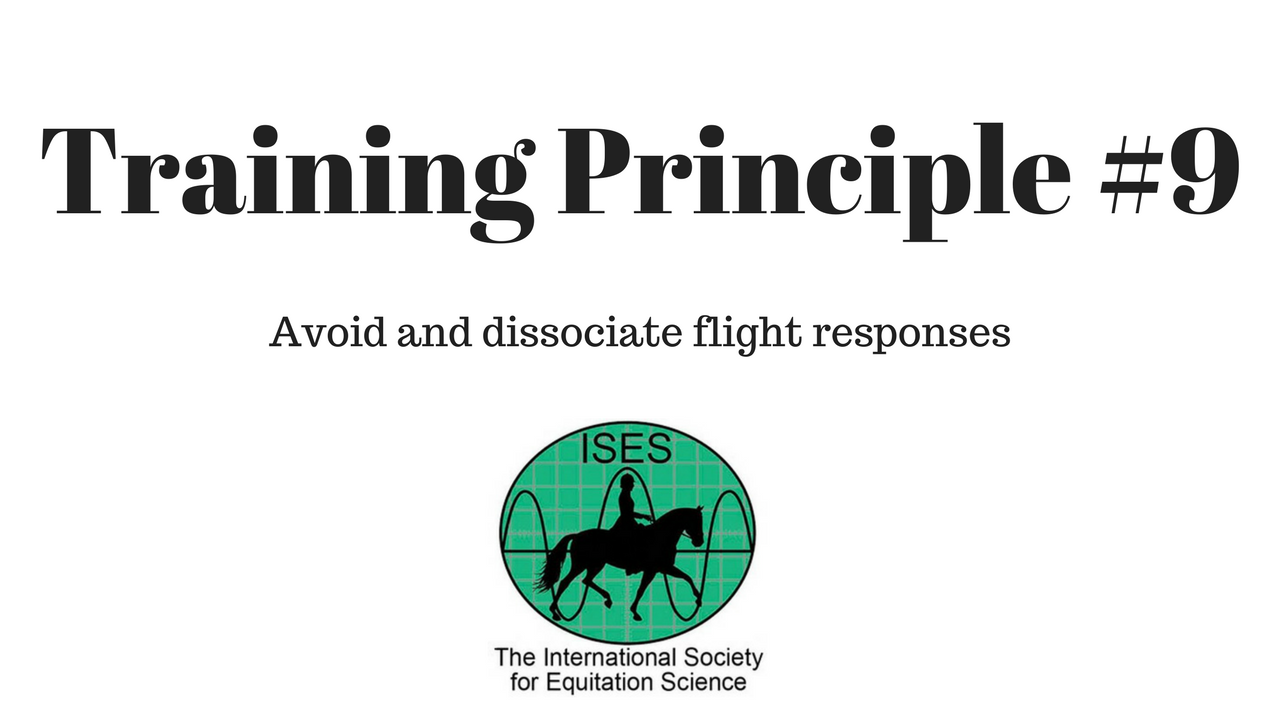
This principle tells us to avoid and dissociate the flight response because of its unique characteristics - it's very difficult to un-train/extinguish (often impossible) and can reappear spontaneously. Training methods that invoke a fear/flight response, not only reduce learning but also horse welfare.
A good example to contrast the using the flight response and avoiding the flight response would be how you choose to warm up your horse before riding. Let's consider these two possible methods of warm-up:
- Lunging on a line attached to the bridle - here the horse might be trotting or cantering around the handler and will be 'getting rid of that extra energy'. We've all seen this being done at shows before a class and often the horse is bucking and trying to run off. At other times, the handler is forced to chase the horse on the line to 'get the buck out'.
- Ten minutes of a quiet in-hand exercise at walk such as 'give to the bit'. This exercise slightly raises the horse's emotional level and engages him/her with the handler.
It is said that this flight response is difficult to extinguish and may reappear spontaneously - have you ever had a horse that has seemed to 'freak-out', 'lose it' or run off for no particular reason? Personally, I've come across a few horses and it's probably less than one in one hundred, that have had such a traumatic experience involving a flight response (and often only a single episode) that it has remained with them all of their lives, making them unpredictable and potentially very dangerous when handled or ridden. I've seen this as a result of a poor first saddling experience, where the horse has been left to 'work/buck it out' and on several occasions where youngsters have been tied up without proper training and pulled back, resulting in a traumatic flight experience.
Have you ever come across this? Do you know what experience led to this reaction? Tell me about it in the comments below.
If you'd like this series delivered directly to your inbox, click here.

